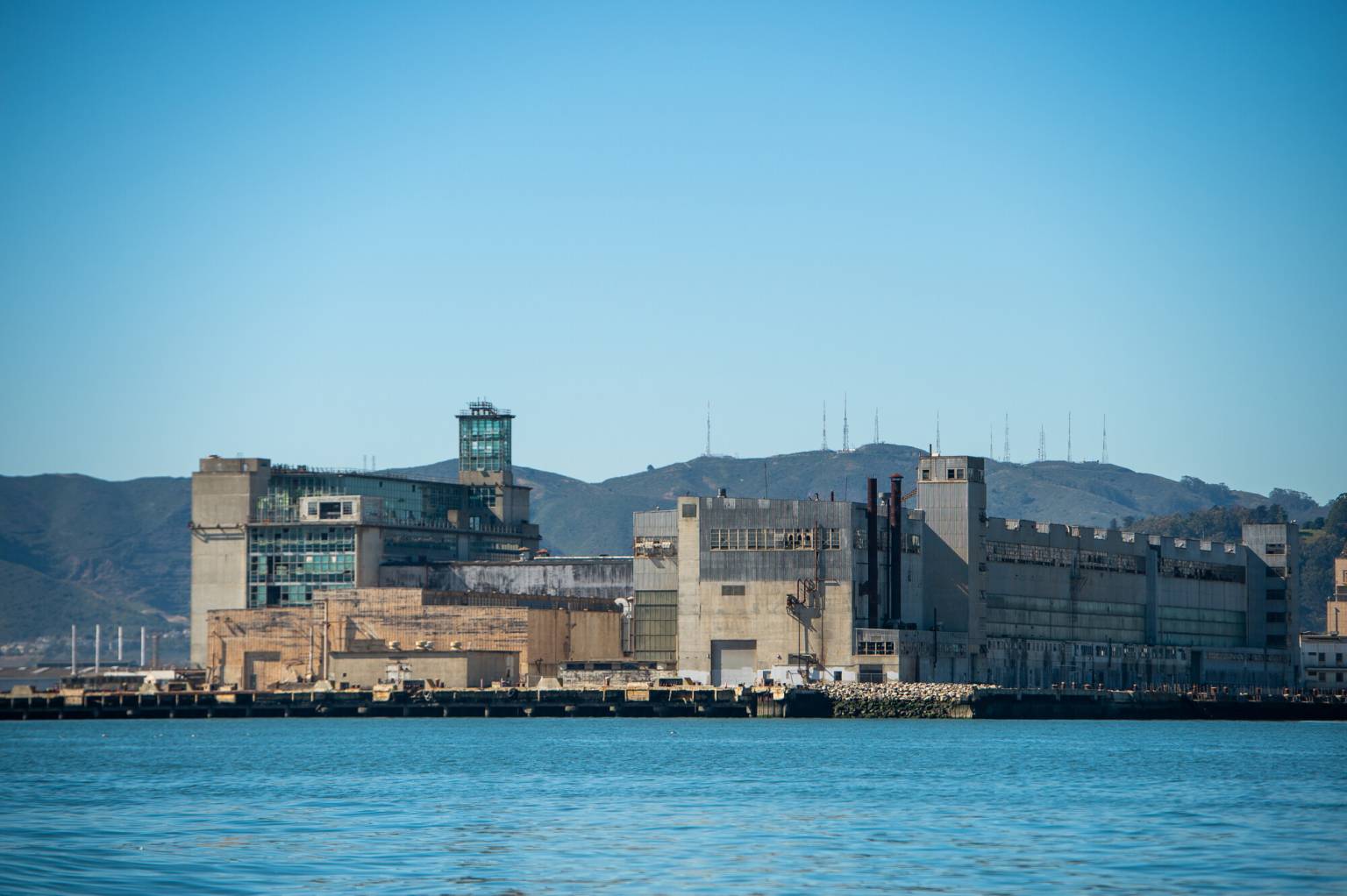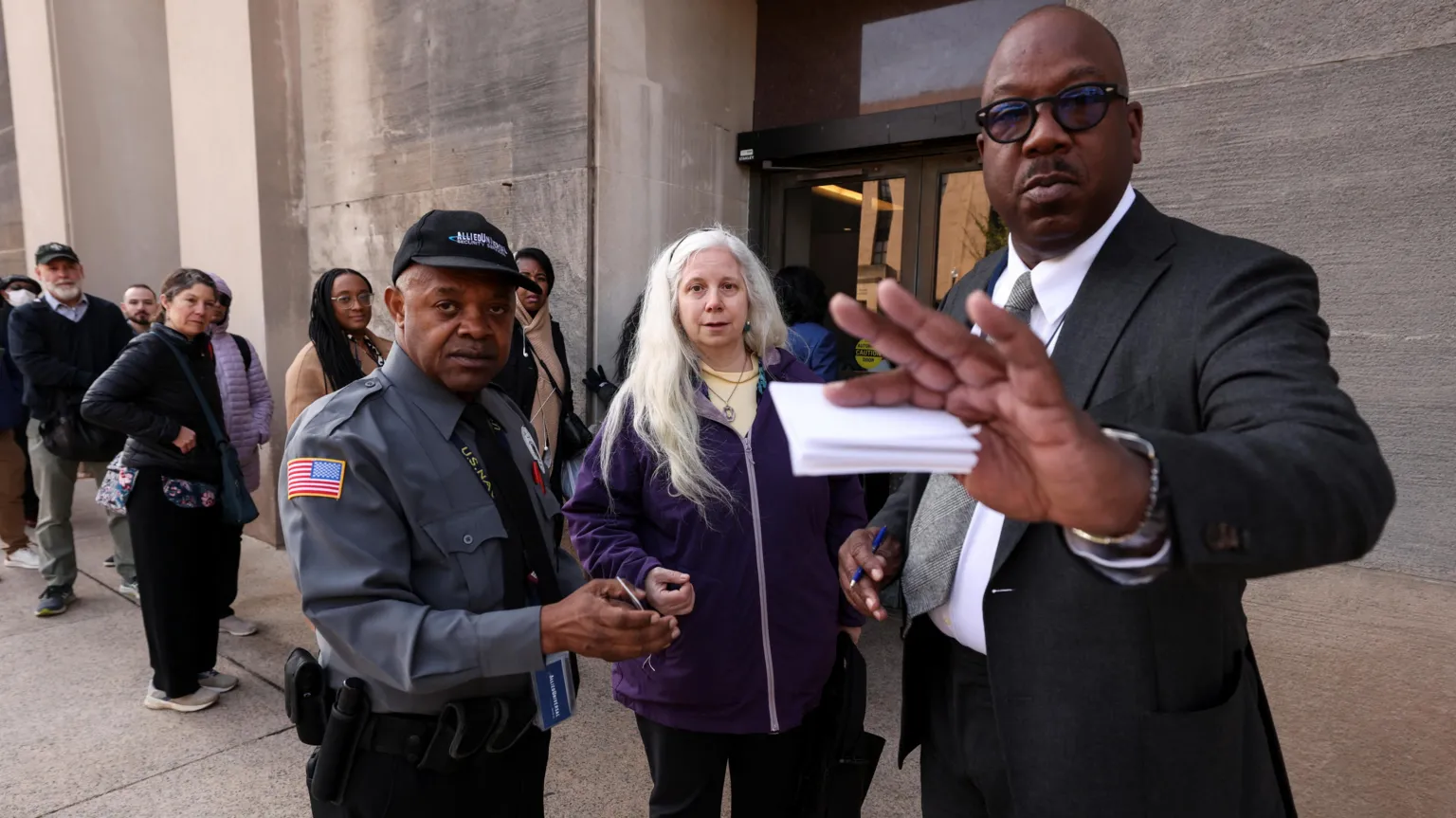Surprising Ways Former Bay Area Military Bases Are Transforming (and Why It Takes So Long)
By April Lanux
If you live in the Bay Area — or even just visited — chances are you’ve set foot on a former military base.
Most people know the Presidio, which dates back to the Spanish, and Fort Mason, which launched over a million troops into the Pacific during World War II. The sites are now a mix of commerce, open space, and homes.
Then there are other popular places — that you may not have known used to be old military stomping grounds — like the Bay Area Discovery Museum in Sausalito.
Other military sites have been collecting dust for decades, like Point Molate in Richmond, which is vacant and closed off to the public.
Bay Curious listener Cameron Tobey wanted to know why there are so many abandoned military bases in the Bay Area, and what is being done with them now (check out our other story about the rise and fall of the military in the Bay Area).
Decades after the military shuttered operations, many of these sites are mired in the drawn out process of being repurposed, redeveloped, razed and re-envisioned.
The case of Mare Island
There are dozens of former military sites around the Bay Area — according to author and historian Elouise Epstein — and they all have their own redevelopment story.
The former Mare Island Naval Shipyard in Vallejo is one of several former military sites that’s still in some stage of transition. Opened back in 1854, it was one of the most active navy yards in the world during World War II. But in 1996, the base was closed, along with many other Bay Area sites, during the Base Realignment and Closure (BRAC) process.
Now, Mare Island (which is actually a peninsula) is open to the public, and spans 5,000 acres. It’s a combination of vast open space, a few hundred homes tucked away in clusters, and a handful of retail businesses. The most active area is in the warehouse district, which hosts manufacturers like high-end furniture makers and modular home builders.
Visitors to the island will see a post-industrial landscape with some intriguing charm. There are beautifully restored historic buildings right next to abandoned lots and randomly placed palm trees.
“It’s been this sort of hidden thing for a long, long time,” says Kent Fortner, a resident, founder of the Mare Island Brewing Company, and board president of the Mare Island Historic Park Foundation.
“If you have any desire to know Naval history from particularly World War I and World War II, this place makes your hair stand on end,” he said.
On a tour of the island, Fortner pointed out the signs of Navy life all over the place — cannons, a giant metal anchor hidden in the bushes, an ammunition bunker and a firing range. The most impressive remnants are the huge rusty metal cranes on the main historic wharf that were used to repair and build large warships.
“It’s mind-boggling how large these ships were,” Fortner said.
Even though Navy contamination has mostly been cleaned up, and Hollywood regularly drops in (see TV shows Mythbusters, 13 Reasons Why, and the movie Bumblebee), the former Navy base still doesn’t have enough amenities to make it a big residential draw.
“I can’t say that it’s thriving right now,” said Fortner about the lack of retail businesses, modern parks and walkable neighborhoods. “I mean, converting these naval bases is so complex.”
Why does it take so long to redevelop military sites?
Navy shipyards like the ones on Mare Island, Hunters Point and in Concord closed decades ago. So why is it taking so long to reinvent them?
Regional planners and developers agree the environmental clean up from the military can take decades.
“The military have never been famous for their environmental stewardship,” said Matt Regan, senior vice president for public policy at the Bay Area Council. “So there’s definitely cleanup challenges, which is expensive.”
After the Navy left, Mare Island grappled with mercury and PCB contamination, petroleum in the soil, and underground fuel tanks.
The Hunters Point Naval Shipyard in San Francisco’s Bayview was declared one of the nation’s most contaminated sites in 1989. The city wants to put 10,000 homes there, but it’s been mired in a host of cleanup controversies. The Navy has spent decades cleaning there, but the work isn’t done (check out the Bay Curious episode on this).
Soliciting public input on plans for redevelopment is another process that takes a long time. In the former Concord Naval Weapons Station’s case, that took seven years.
“We had a whole series of options and there were eight alternatives,” said Guy Bjerke, who is directing the base reuse project for the city of Concord. “So the process of developing community consensus is a challenge.”
A third major factor complicating the reinvention of these spaces is keeping private developers onboard.
Private developers assume a lot of financial risk when they take on massive naval base reuse projects, according to Mark Shorett, a principal regional planner with the Association of Bay Area Governments (ABAG).
Developers often pay for and install basic infrastructure like sewer, water and electricity for these sites, before they even start building “vertical” infrastructure like buildings. Because the environmental cleanup, community input process and regulatory processes take many years, developers may decide it doesn’t “pencil out” — and then walk away.
“They’re trying to create a profitable project and in some cases it’s very challenging for them to do that in the context of a long-range plan,” Shorett said.
And he points out that in other countries private developers don’t typically get involved in the creation of infrastructure.
The Concord base reuse project is, again, an example of incurring delays because of trouble with developers.
Their base closed in 2005, and the site is now working with its third developer. The first company left after labor disputes. The second one was essentially dismissed by the city council. The current reuse plan includes 12,000 housing units, a sports complex and a college campus.
“Finding a master developer who is willing to meet community expectations around how the project should develop [has] been a complicated process,” said Bjerke, adding that it will probably be another four to six years before anything is built above ground in Concord.
Is there a larger vision connecting different military sites?
There’s a strong desire to create new housing on the Bay Area’s former military sites, especially the Navy bases, according to Shorett with ABAG, the planning agency for the Bay Area’s 101 cities. Not only are these sites valuable because of their sheer size, but because they’re transit friendly. They can help meet the area’s affordable housing and climate goals by keeping people where they work.
Housing has already successfully been built on former bases. Treasure Island was once Navy stomping grounds and now has a lot of apartments, with more on the way.
The new residential community on the former Hamilton Air Force Base in Novato is another example.
Shorett said the redevelopment success at the Presidio and Fort Mason have no doubt been related to the fact that they’re on national park land.
“The federal government is able to continue to be involved over the long term with less constraints around needing to make a profit,” said Shorett.
He said one way to speed up development on some of these naval sites is to divide up big parcels of land so all the financial risk doesn’t fall on one developer. That way, multiple agencies can move forward with different projects at the same time.
Artists are using the abandoned spaces
While regional planners are eyeing the former military sites for housing, other people like them just how they are. History buffs, artists and makers like them raw, industrial, with lots of open space to create.
“We find ourselves pretty at home here,” said Kevin Corcoran, one of the founders of Re: Sound, a group of experimental sound artists that have been holding performances at Mare Island for 10 years.
Recently, a cellist from Seattle, Lori Goldston, played in an empty metal storage shed right on the historic dock, surrounded by giant rusty cranes.
She is just one of many people here who have found a new purpose for the historic navy architecture.
“It’s nice to see all this infrastructure being put to good use,” she said. “I’ve seen a lot of empty space and wonder why there aren’t more things happening here.”
While it might seem like the sprawling military bases found throughout the Bay Area are just sitting, in reality many of them are making their way through some kind of redevelopment process. But cleaning up after the military takes time. We’ll likely see more built on these sites — probably housing — but it’s going to take a while.


 654
654








